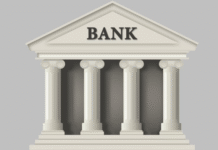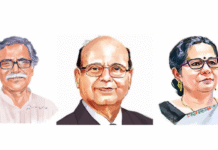Bangladesh shows the way for financial inclusion
Atiur Rahman

The consensus view which emerged from this retreat was to go for massive financial inclusion taking advantage of digital technology. This also fit in well with the strategic vision of the newly elected Government of achieving ‘Digital Bangladesh’ by 2021. The objective was to create more demand within the country by providing greater financial access to the un-banked and under-banked, in addition to strengthening supply chains of produces consumed by the majority of the people, particularly food at an affordable and stable price so that their consumption remained stable as well. Indeed, the proposed drive for financial inclusion was much more than improving financial access to all as the policy makers underscored that the conventional monetary and financial policies were not addressing the inclusivity concerns, rather instead of bolstering productive outputs, the liquidity was flowing into profit-making speculative pursuits.
The Bangladesh Bank stepped in with financial policies steering initiatives towards socially responsible productive pursuits. For this to happen, the central bank leadership had to have close interactions with both other central bankers as well as commercial bankers for changing their age-old mind-set to go for more inclusive banking. The motivational ethos initiated by the top regulator was fortunately well received by the banking community as it could see the logic behind it. Many of the bankers had burnt their fingers by providing finance to the big borrowers who were not always interested in repaying the loans in time.
Bangladesh had by then a rich history of formal small-finance initiated by some world-famous non-governmental organisations whose operations began to be well regulated by the newly established Micro-credit Regulatory Authority (MRA). The Board of MRA was fortunately chaired by the Governor of the Central Bank. This regulatory linkage could be used to bring microfinance institutions (MFIs) and banks closer in providing much needed agricultural credit to farmers and non-farm small entrepreneurs, mostly women, killing two-birds with one stone. The banks were finding it difficult to reach the poor borrowers who were hard to reach for geographical remoteness and at the same time the MFIs did not have enough liquidity to provide them required finance. Both the groups were motivated by the central bank to sign MoUs for a win-win interlinked programme. This worked out well as nearly a third of the total agricultural credit started flowing to remote areas through this innovative credit channel. As a result Bangladesh’s agricultural sector has been performing exceedingly well despite significant climate change related challenges.
In addition, I started encouraging the central bank to go for a host of institutional reforms aiming at preparing the bank personnel to recognise financial inclusion as an integral part of implementation of monetary policy. During that period, monetary policy started incorporating socially responsible inclusive finance as an objective of innovative central banking. The central bank was restructured establishing new departments like those of Financial Inclusion, Agricultural Credit and Special Programmes, Small and Medium Enterprises (SMEs) with targeted focus on the development of entrepreneurship among women, Sustainable Finance and the like. Separate departments were set up for focused supervision of agriculture and SME credit. The central bank also initiated an ‘immersion programme’ for the new recruits during their foundation training so that they would spend a few weeks in the rural areas to get the field view of how farmers and small entrepreneurs were doing after getting the inclusive financial services including credit. This was, indeed, a game changer in transforming their mind-set towards becoming more motivated to go for inclusive finance.
The technology came in as a big support to this endeavour. The central bank immediately went for up-gradation of the payment system to initiate automatic clearing house, electronic fund transfer, national payment switch, real time gross settlement, automatic credit information bureau, guidelines for bank-led mobile financial services and agent banking. The bank also started using technology for off-site supervision of banking by innovative das-boards and use of available digital technologies. As a result, the transmission channels improved dramatically through smooth implementation of the monetary policy and thus providing hope for a more inclusive and vibrant economy for Bangladesh.
The whole world has started recognising this tech-savvy innovative financial inclusion move of Bangladesh. World giant like Ali Baba has come forward to partner with one of Bangladesh’s pioneering bank-led mobile financial service providers. This tells a lot about the growing confidence of foreign Direct Investment (FDI) in our financial sector. Earlier, IFC, a subsidiary of the World Bank, bought a part of the equity of our local City Bank which has been helping in improving the governance of the bank. The result has been eye-catching sustained inclusive growth rates along with massive reduction of poverty and increase in life expectancy at birth (at least four years more than that of India and six years higher than that of Pakistan). Bangladesh’s success in improving human development through financial inclusion was hugely appreciated by the UN Agencies including the Human Development Report Office (HDRO) when I made a presentation at the UN Head Quarter recently.
In other words, indeed the achievement of Bangladesh’s inclusive finance is gradually emerging as a key enabler to reduce extreme poverty and boost shared prosperity. Kaushik Basu, the former Chief Economist of the World Bank, who saw Bangladesh’s financial inclusion on the ground when I took him to the villages, noted a big hand of inclusive finance in making Bangladesh a booming economy in his recent article published by the Project Syndicate.
Bangladesh, of course, considers financial inclusion as a means of economic democratisation for social cohesion.
Despite a lot of laurels received from global well-wishers like The Financial Times and Euromoney, Bangladesh will have to remain on guard against a number of challenges for ensuring more robust financial inclusion to all as there is always the danger of complacence and opposition from the vested quarters. Indeed, the progress made so far was driven by well-motivated central and commercial bankers. This did not happen spontaneously. In order to bring in this spontaneity both regulators and participating banks should be made aware of the inherent strength of financial inclusion in promoting financial stability which can be affected from both demand and supply sides in absence of this. In fact, the demand side problem of financial inclusion deserves to be more exclusively followed by the regulators and the bankers to keep the momentum of financial inclusion going.
Digitisation of banking is a critical move. Given the availability of robust technology the banks should create digital apps for financial inclusion (like the one recently launched by bKash) and reach the un-banked walking the last mile. The initial focus on women given by the central bank should be maintained at any cost. The central bank initiatives of financial literacy and opening help desk, road-show for mainstreaming financial inclusion must not be allowed to wane. In particular, the frontline branch managers and bankers dealing with the small customers must be motivated to remain focused on the drive for financial inclusion. There should a master circular from the central bank to all banks and financial institutions with detailed guidelines, not only the piecemeal ones given from time to time.
Furthermore, there is certainly a need for process documentation and independent impact assessments of the financial inclusion initiatives taken by the banks and other financial institutions to monitor the course of this innovative strategy of financial inclusion taken early on by Bangladesh Bank. This will help mend the gaps of the strategy, if any. This has been, indeed, learning by doing campaign by the central bank of Bangladesh. It is high time that the Ministry of Finance joins hands with the central bank and helps include other regulators related to capital and insurance markets to design and implement a more robust national digital financial inclusion strategy as a part of national contribution towards implementation of sustainable development goals.









